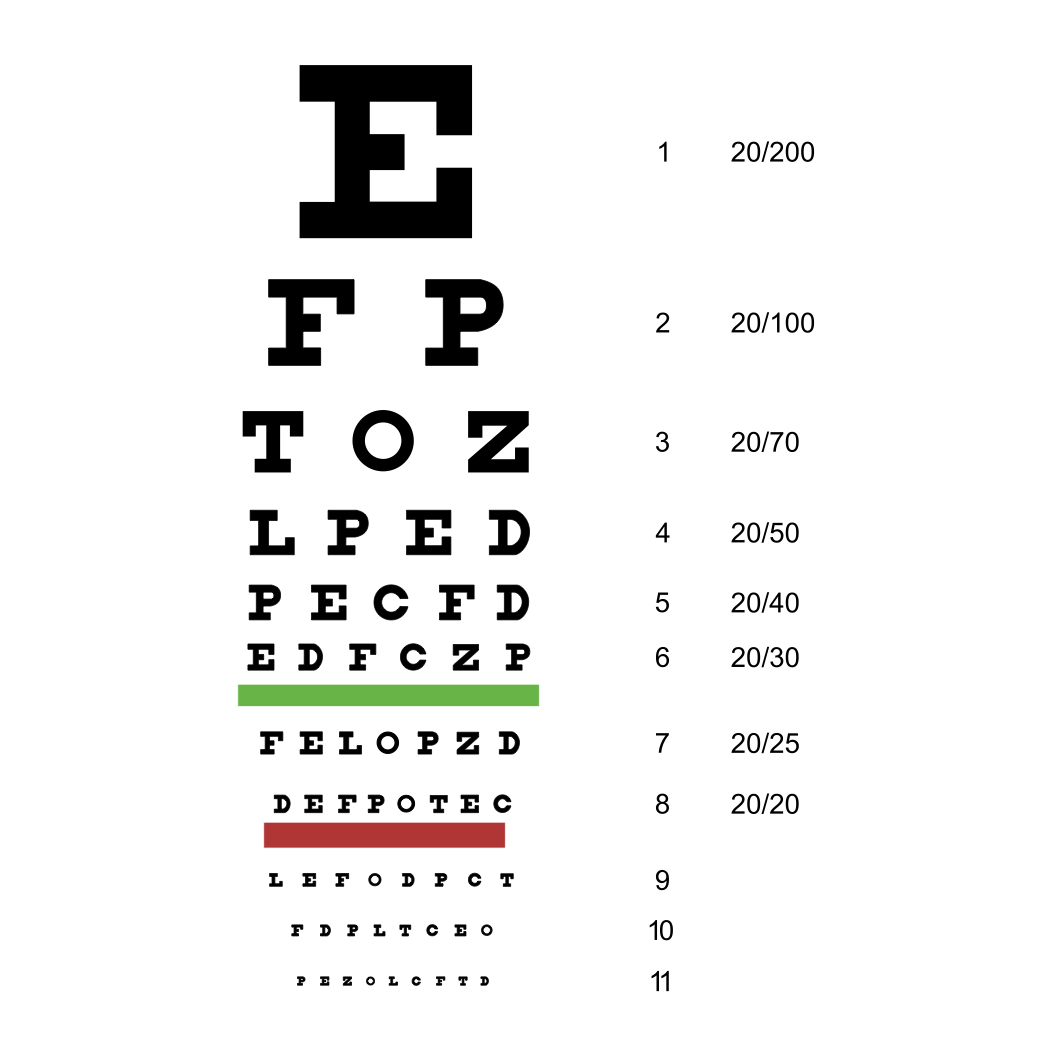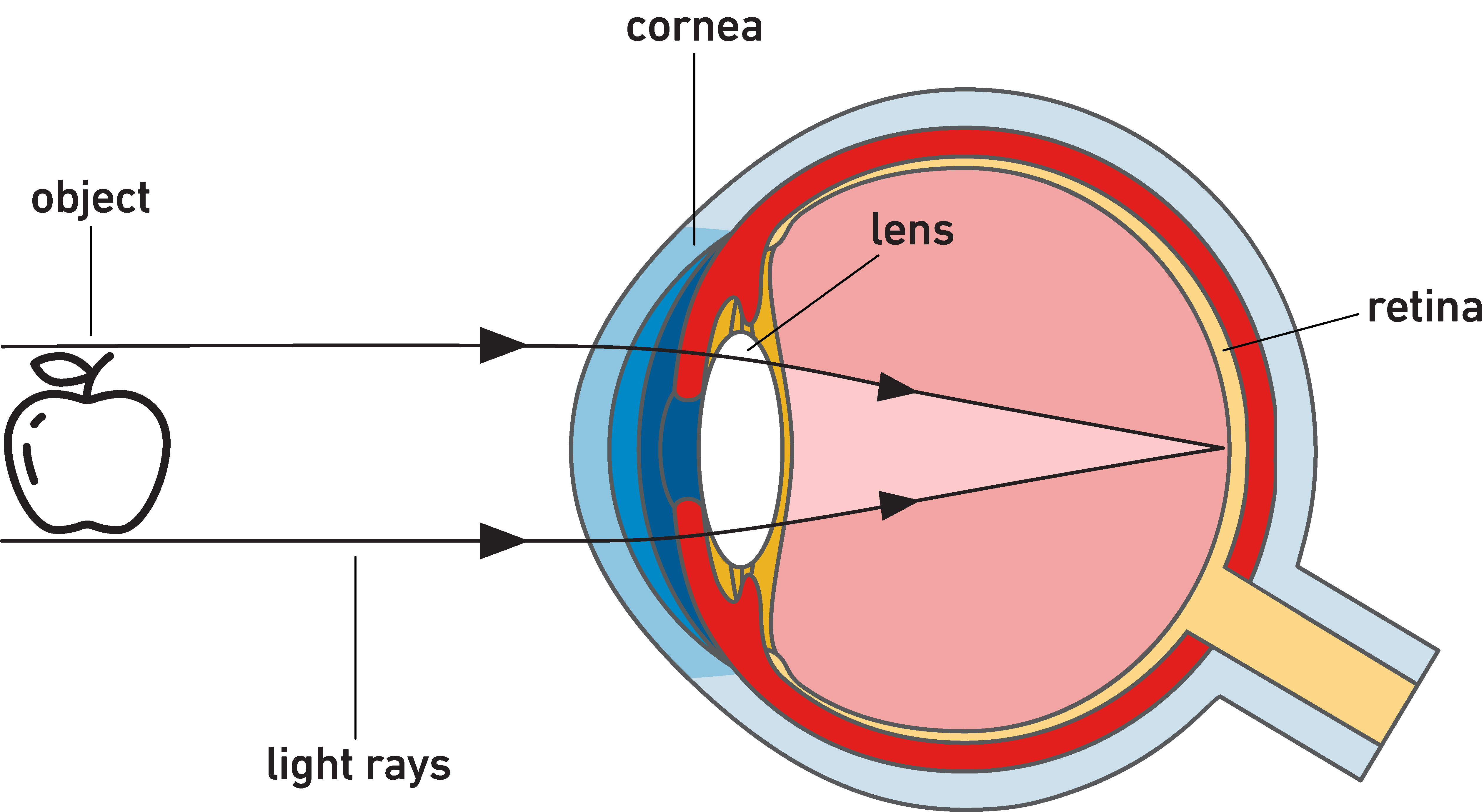Subscribe to eyeMatters periodic news
"*" indicates required fields
What does 20/20 vision actually mean?
Did you know 6/6 vision is equivalent to 20/20 vision?
The only difference is that 6/6 is a metric measurement (a test distance of 6 metres) and 20/20 is an imperial measurement (a test distance of 20 feet, which is the same as 6 metres). Australia used to follow the imperial system but switched to the metric system last century like many other countries. Some countries like America continue to use the imperial system.
This means that an Australian optometrist or ophthalmologist will record your distance vision in metres, rather than feet. However, even in Australia, people are generally more familiar with the term 20/20!
Nearly 800,000 Australians live with significant vision impairment or blindness, with 90% of these avoidable or preventable cases.1,2 Visual impairment can significantly impact a person’s quality of life by affecting daily activities, reducing independence and increasing the risk of falls and injury.
Leading causes of vision impairment globally1
- Uncorrected refractive errors (short-sightedness, long-sightedness, astigmatism and presbyopia)
- Cataracts
- Age-related macular degeneration
How is vision measured?
Distance vision impairment is most commonly measured using a Snellen eye chart. These charts check how clear your eyesight is – this is called visual acuity.

During an eye exam, the patient will sit a specified distance (usually 20 feet or 6 metres) from the eye chart. However, a mirror on the wall is often used as examination rooms are not usually this long. The examiner will ask the patient to start by reading the letters, working down the chart from larger to smaller letter size until they can no longer correctly read the text.
The distance the patient was sitting from the eye chart will be noted against the smallest line they were able to read. This outcome can then be compared to the distance from which the average person reads the same line of letters. The results are then expressed as a fraction, with the patient’s distance on top and the average person’s distance on the bottom (e.g. 20/20 or 6/6).
What does 20/20 vision mean?
Simply put, 20/20 means ‘normal’ distance vision.
In contrast, 20/40 (or 6/12) vision means that a patient who is 20 feet (6 metres) away from a standard eye chart can only read the same-sized letters that someone with 20/20 vision can read from further away (i.e. 40 feet or 12 metres away from the eye chart). In other words, 20/40 vision means you cannot see as well as someone with 20/20 vision.
Is 20/20 vision classed as perfect vision?
20/20 (or 6/6) vision is a term used to indicate normal visual acuity. However, individual visual acuity can actually be better than this! For example, a person with 20/15 (6/4) vision can, at 20 feet (6 metres), read what the average person can only read when 15 feet (4 metres) away.
Visual acuity refers to the sharpness of images and doesn’t take into account depth perception, colour vision, or the ability to focus on moving objects or read under different lighting conditions. Those with above-average distance vision (better than 20/20 or 6/6) may also have trouble seeing close objects clearly (presbyopia). Presbyopia is a normal condition that occurs with age and generally begins in your mid-to-late forties.
Therefore, it’s possible to have 20/20 vision whilst still requiring glasses for near work.
What does ‘legally blind’ mean?
There is no universally accepted measurement for ‘legally blind’. Different countries, and even different organisations within the same country, adopt varying definitions. Generally, best-corrected visual acuity (that is, vision obtained when using glasses or contact lenses) is used to measure the severity of visual impairment.
The most widely accepted definition, from the ICD-10-AM, defines blindness as having visual acuity worse than 20/400 (3/60).3 Some other organisations, including Vision Australia, are more conservative and class ‘blindness’ as having visual acuity worse than 20/200 (6/60) or field of vision of less than 20 degrees in diameter.4
What are the minimum vision requirements for driving in Australia?
The Austroads eligibility criteria set out the minimum requirements for obtaining a private driver’s licence in Australia, although this may be different under certain conditions (for example, if you require a heavy-duty vehicle licence):*5
- Visual acuity: At least 6/12 in one or both eyes,† with or without glasses or corrective lenses
- Peripheral vision: Horizontal field of vision of at least 110 degrees
Can visual acuity be improved?
As light rays enter the eye through the cornea (the clear, curved surface that protects the front of the eye), they are bent (refracted) through to the lens, where they are bent again to focus at a point on the retina (back layer of the eye containing light-sensitive cells).

Cataracts
Cataracts form when the normally transparent lens in your eye becomes cloudy and hard. They can cause light rays to scatter, or even stop them from passing through the lens in more advanced cases.
If you have cataracts that are affecting your visual acuity, surgical removal and replacement with an artificial lens is likely to be the most appropriate option to restore your vision.
Visual recovery will be determined by the overall health of your eyes, but achieving excellent vision without glasses is common. With the latest advances in lens technology, some people may even no longer require reading glasses after cataract surgery.
Book a cataract consultation with an eye surgeon
Refractive errors (shortsightedness, longsightedness, astigmatism, presbyopia)
Refractive errors also interfere with light rays focusing correctly onto the retina. Presbyopia, which is the age-related loss of near vision, is one type of refractive error. It is similar to cataracts in that the lens becomes dysfunctional (it loses its flexibility and becomes stiff). However, unlike cataracts, the lens stays transparent in this case. Presbyopia can be corrected by wearing reading glasses for close-up work.
Some people with presbyopia choose to have a refractive lens exchange (also known as clear lens surgery).
Refractive lens exchange is the same as cataract surgery – the dysfunctional lens is removed and replaced with an artificial one – but without cataracts present.
Book a vision correction consultation with an eye surgeon
Other common refractive errors include short-sightedness, long-sightedness and astigmatism. These conditions are due to an irregularly shaped cornea. Glasses and contact lenses can improve or correct low visual acuity by adjusting the way light is refracted through the cornea so it focuses correctly on the retina. Depending on your situation and lifestyle needs, options for correcting a corneal refractive error may also include laser eye surgery (LASIK, SMILE® or ASLA/PRK) or implantable contact lenses.
Call 1800 1 LASER to book a free laser assessment.‡
* Drivers with commercial licenses used to drive trucks and buses must meet different vision requirements. ↩︎
† At least 20/40 (6/12) in both eyes for a Victorian licence. ↩︎
‡ Subsequent consultations are paid. All medical and surgical procedures have potential benefits and risks. Check with your ophthalmologist before proceeding. SMILE® is a registered trademark of Carl Zeiss Meditec. ↩︎
References
- Australian Institute of Health and Welfare. How common is visual impairment?. Canberra: AIHW, 2024. Available at https://www.aihw.gov.au/reports/eye-health/eye-health/contents/new [Accessed 12 November 2024]. ↩︎
- The Royal Australian College of General Practitioners. National guide to preventative health assessment for Aboriginal and Torres Strait Islander people. East Melbourne, VIC: RACGP Sept 2018 [https://www.racgp.org.au/FSDEDEV/media/documents/Clinical%20Resources/Resources/National-guide-3rd-ed-Sept-2018-web.pdf][5][Accessed online January 2020]. ↩︎
- The Australian Institute of Health and Welfare. A guide to Australian eye health data, 2nd edition. Canberra, ACT: AIHW, 2009. Available at https://www.aihw.gov.au/reports/eye-health/guide-australian-eye-health-2nd-edition/contents/table-of-contents [Accessed online January 2020]. ↩︎
- Vision Australia. Blindness and vision loss. VIC: Vision Australia. Available at https://www.visionaustralia.org/information/newly-diagnosed/blindness-and-vision-loss [Accessed online January 2020]. ↩︎
- Austroads and National Transport Committee. Assessing fitness to drive. Sydney, NSW: Austroads 2016. Available at https://austroads.com.au/drivers-and-vehicles/assessing-fitness-to-drive [Accessed January 2020]. ↩︎
The information on this page is general in nature. All medical and surgical procedures have potential benefits and risks. Consult your ophthalmologist for specific medical advice.
Date last reviewed: 2025-02-20 | Date for next review: 2027-02-20
